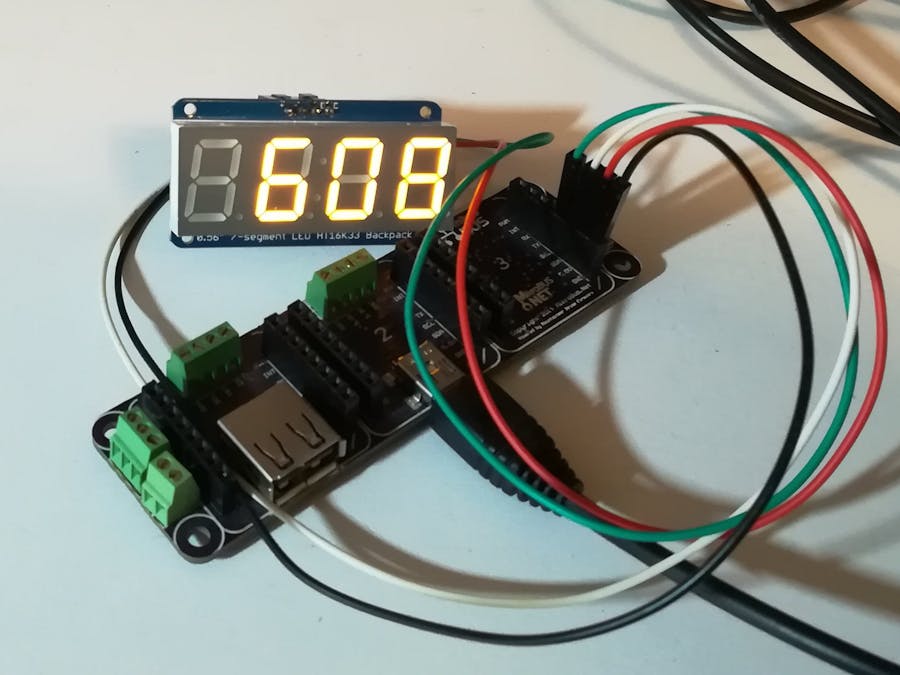using System;
using System.Threading;
using Windows.Devices.I2c;
namespace Hackster.io_02
{
public class Program
{
#region Digits
/// <summary>
/// Byte values to send to the HT16K33 for displaying digits
/// </summary>
public static byte[] Digits =
{
0x3F, // '0'
0x06, // '1'
0x5B, // '2'
0x4F, // '3'
0x66, // '4'
0x6D, // '5'
0x7D, // '6'
0x07, // '7'
0x7F, // '8'
0x6F // '9'
};
/// <summary>
/// Byte value for the minus sign
/// </summary>
public const Byte Minus = 0x40;
#endregion
private static Byte[] _buffer;
private static I2cDevice _display;
private static byte _brightness = 5;
public static void Main()
{
Thread.Sleep(1000);
var z = 0;
try
{
_buffer = new Byte[11];
_display = I2cDevice.FromId("I2C1", new I2cConnectionSettings(0x70) { BusSpeed = I2cBusSpeed.FastMode });
_display.Write(new byte[] { 0x21 });
Thread.Sleep(10);
_display.Write(new byte[] { 0x81 });
_display.Write(new[] { (byte)(0xDF + _brightness) });
for (int i = 0; i < 2000; i++)
{
Write(i, i > 999);
Thread.Sleep(10);
}
for (int i = 0; i > -1000; i--)
{
Write(i);
Thread.Sleep(10);
}
}
catch (Exception)
{
}
finally
{
while (true)
{
Thread.Sleep(100);
}
}
}
/// <summary>
/// Displays an integer with the optionnal colon.
/// </summary>
/// <param name="number">The number to display.</param>
/// <param name="colon">If set to <c>true</c>, then colon ':' will be displayed.</param>
/// <example>
/// <code language="C#">
/// // Displays 123
/// _disp.Write(123);
///
/// // Displays 4567 with colon -> 45:67
/// _disp.Write(4567, true);
/// </code>
/// </example>
private static void Write(Int32 number, Boolean colon = false)
{
if ((number > 9999) || (number < -999)) { return; }
_buffer[5] = colon ? (Byte)0xFF : (Byte)0x00;
if (number >= 0)
{
_buffer[9] = Digits[number % 10];
if (number > 9) { _buffer[7] = Digits[(number / 10) % 10]; }
if (number > 99) { _buffer[3] = Digits[(number / 100) % 10]; }
if (number > 999) { _buffer[1] = Digits[(number / 1000) % 10]; }
}
else
{
_buffer[7] = Minus; // '-'
_buffer[9] = Digits[-number % 10];
if (number < -9) { _buffer[7] = Digits[(-number / 10) % 10]; _buffer[3] = Minus; }
if (number < -99) { _buffer[3] = Digits[(-number / 100) % 10]; _buffer[1] = Minus; }
}
_display.Write(_buffer);
}
}
}






Comments